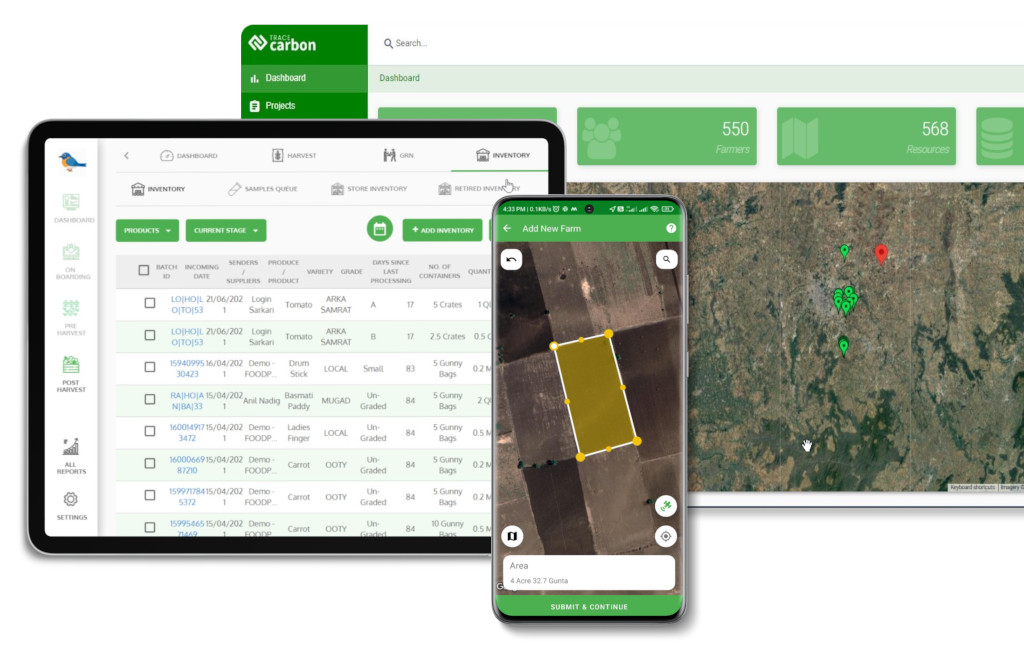Contact: +91 99725 24322 |
Menu
Menu
Quick summary: Learn how EU importers can prepare for EUDR DDS filing. Discover key requirements, digital compliance strategies, and FAQs to stay audit-ready and avoid costly delays.

EUDR DDS Filing is the process EU importers must follow to prove their products are deforestation-free and legally sourced. To prepare, importers should verify HS codes, map suppliers to the farm level, collect GeoJSON geolocation data, run deforestation risk assessments, and file a Due Diligence Statement in the EU TRACES system. Using digital tools and automation makes DDS filing faster, error-free, and ensures smooth compliance with the EUDR deadlines.
The EU Deforestation Regulation (EUDR) is a game-changer for importers. Starting December 2025, importers of key commodities like soy, coffee, cocoa, palm oil, rubber, wood, and cattle products must prove their supply chains are deforestation-free. The stakes are high; failure to comply could mean shipment delays, financial penalties, or even blocked access to the EU market.
At the heart of this compliance process lies the Due Diligence Statement (DDS), a digital declaration that confirms your products are sourced responsibly and meet EUDR requirements. In simple terms, the DDS is your “green passport” for EU trade. Without it, your containers risk getting stuck at customs.
Here’s the challenge: many importers are still juggling manual spreadsheets, fragmented data, and inconsistent supplier records. This makes filing a compliant DDS not only time-consuming but also error-prone, putting trade continuity at serious risk.
The good news? With the right preparation and digital tools, importers can simplify DDS filing, ensure smooth EU TRACES submissions, and protect market access.
In this guide, we’ll walk you step-by-step through how EU importers can prepare for DDS filing, and share practical solutions to streamline compliance, reduce risk, and stay ahead of deadlines.
Key Takeaways
The Due Diligence Statement (DDS) is the cornerstone of EUDR compliance. Think of it as a digital attestation of trust, a formal declaration submitted by EU importers to confirm that the products they are bringing into the EU market are deforestation-free and legally sourced.
But the DDS isn’t just paperwork. It’s a proof of accountability. By filing the DDS, businesses are not only meeting a regulatory requirement but also signaling to consumers, partners, and regulators that their supply chains are transparent, traceable, and sustainable.
Every importer in the EU dealing with the seven regulated commodities—soy, palm oil, coffee, cocoa, wood, rubber, and cattle (including beef and leather)—must file a DDS. This applies to all operators, whether you are a small trader or a multinational processor. No exemptions exist for scale; every shipment must carry its DDS.
The DDS must be filed before goods are placed on the EU market or exported from the EU. In practice, this means you can’t even release your products into circulation without this digital “green clearance.” It’s a pre-market entry barrier that ensures only compliant, deforestation-free products reach European shelves.
Most businesses treat the DDS as a burden of compliance—a new layer of bureaucracy. But forward-looking companies see it differently:
In short, EUDR DDS filing isn’t just about compliance—it’s about building a resilient, future-ready supply chain that meets the world’s growing demand for transparency.
Want to go deeper? Learn the exact steps in our guide:
[How to File a DDS Under EUDR].
Curious about the EU’s compliance portal? Read:
[What is EU TRACES and How It Works].
The EUDR Due Diligence Statement (DDS) is designed to strengthen accountability in global trade. But for importers, filing a compliant DDS isn’t straightforward. It requires navigating multiple layers of data, suppliers, and digital reporting systems. Below are the most common hurdles—and why they matter.
One of the first EUDR compliance challenges is knowing whether your product is even covered. The regulation lists 7 commodities—but each is tied to specific HS codes. Many importers struggle with classification, especially when dealing with processed products (like chocolate or leather goods) that blend multiple raw materials.
Misclassification isn’t just an admin error—it can expose your business to non-compliance penalties or missed filing requirements. Proactive HSN code mapping tools can prevent this early bottleneck.
For DDS filing, you need to prove that your product is deforestation-free all the way back to the farm. This means collecting supplier data not just from direct exporters but also from smallholder networks, processors, and intermediaries.
The deeper the supply chain, the harder the traceability. For many businesses, this challenge is actually an opportunity to strengthen supplier engagement and build trust across tiers—something spreadsheets alone can’t deliver.
A key DDS requirement is uploading precise farm-level geolocation data in GeoJSON format. Importers often face DDS filing difficulties here—suppliers may lack digital tools, or the data might be inconsistent, incomplete, or incompatible.
Geolocation isn’t just compliance paperwork—it’s the proof of deforestation-free claims. Importers that invest in reliable mapping tools today will future-proof their compliance tomorrow.
Even with data in hand, importers must run risk assessments to confirm that sourcing areas are not linked to deforestation or forest degradation. The challenge? Many businesses rely on outdated datasets, manual checks, or incomplete satellite insights.
Risk assessment shouldn’t be reactive. Smart businesses are treating it as a continuous monitoring process, using digital MRV tools and satellite-based verification to stay ahead of audits.
The final challenge lies in filing the DDS on EU TRACES (the EU’s digital platform). Errors in data, missing documents, or late submissions can result in delayed shipments, rejected filings, or compliance flags.
TRACES is more than a submission portal; it’s the compliance gateway to the EU market. A rejected DDS isn’t just paperwork; it can directly impact revenue, reputation, and customer trust.
Filing a Due Diligence Statement (DDS) under the EUDR doesn’t have to be a headache. By breaking it down into clear steps, importers can transform compliance from a last-minute scramble into a smooth, repeatable workflow. Here’s how:
The first step in preparation is confirming whether your products are covered. EUDR compliance is commodity-specific and tied to HS codes for soy, palm oil, coffee, cocoa, wood, rubber, and cattle.
Many importers underestimate this step. Misclassification can lead to false assumptions of exemption or unintentional non-compliance. Treat HS code verification as your compliance entry gate—if it’s wrong, everything downstream is at risk.
DDS filing requires you to demonstrate supply chain transparency back to the origin. This means knowing not only your Tier-1 suppliers but also the farms, cooperatives, and intermediaries that feed into your supply.
Supply chain mapping isn’t just about compliance; it’s a chance to spot inefficiencies, strengthen relationships, and identify high-risk suppliers early. Businesses that digitize supplier data gain a long-term edge in both compliance and sourcing resilience.
Every DDS must include precise farm-level geolocation coordinates uploaded in GeoJSON format. This proves whether or not production is linked to deforestation.
For many importers, this is the first time they’re asking smallholders for digital location data. While it may seem like a compliance burden, it actually lays the foundation for better farmer engagement, yield optimization, and even carbon tracking opportunities down the line.
Once geolocations are collected, importers must run risk assessments against deforestation databases and satellite imagery. This verifies that production areas have not encroached into forests or degraded lands.
Don’t think of risk assessment as a one-time task. The real value lies in continuous monitoring, which not only ensures compliance but also strengthens your brand’s sustainability claims and ESG reporting.
Finally, consolidate all the above into an auto-generated DDS that can be filed directly into the EU TRACES system. Automation here is key; manual filing is prone to errors and delays.
Filing a DDS isn’t the end of the story. Importers that invest in automated workflows today can reuse data across multiple shipments, reducing admin costs, avoiding customs bottlenecks, and positioning themselves as preferred suppliers to EU buyers.
Preparing for DDS filing is more than ticking compliance boxes; it’s about building a future-proof supply chain that’s transparent, efficient, and resilient. Importers who start early will avoid last-minute chaos and turn compliance into a strategic advantage.

For many importers, the biggest barrier to EUDR compliance isn’t intent—it’s execution. Manual spreadsheets, fragmented supplier data, and last-minute scrambling make DDS filing a constant headache. This is where EUDR compliance software steps in, turning a complex, error-prone process into a streamlined digital workflow.
Here’s how TraceX EUDR Platform simplifies every stage of DDS filing:
Instead of manually cross-referencing product codes, compliance software automatically matches commodities against EUDR-regulated HS codes.
This isn’t just faster—it eliminates classification errors that could trigger audits or penalties. Think of it as your first compliance filter, ensuring you start on the right foot.
Digital platforms allow importers to map suppliers down to farm-level coordinates. By digitizing farmer data and integrating GeoJSON files, businesses gain end-to-end visibility.
What feels like a compliance burden is actually a strategic asset—companies can use these maps not only for EUDR but also for ESG reporting, carbon projects, and farmer engagement programs.

By combining satellite monitoring with deforestation databases, technology provides importers with real-time alerts if sourcing areas overlap with deforested or degraded lands.
Instead of reacting after the fact, importers can shift to proactive compliance, addressing risks before shipments are flagged. This turns compliance into a form of risk insurance.

Once data is collected and verified, the system can auto-generate DDS reports in the exact format required by EU TRACES.
This is where DDS automation truly shines. Importers can reuse data across multiple shipments, saving time, reducing admin costs, and minimizing human error.
The final hurdle—filing with the EU TRACES system—becomes effortless with direct integrations. Instead of re-uploading or reformatting data, importers can submit DDS filings with a single click.
TRACES shouldn’t be a bottleneck. With software integration, it becomes the last mile of a frictionless compliance journey.
With the right EUDR compliance software, importers don’t just file DDS statements—they future-proof their supply chains. Technology transforms DDS filing from a compliance burden into a competitive differentiator, positioning businesses as trusted, sustainable partners in global trade.

EUDR compliance is not just a regulatory checkbox; it’s a chance for EU importers to showcase transparency, win buyer trust, and future-proof their business against evolving global standards. By preparing early, digitizing supplier data, and leveraging platforms like TraceX for seamless DDS filing, importers can move beyond risk management to strengthen their market position. The deadline is approaching fast; those who act now will not just comply but lead in sustainable trade.
EU importers face unique challenges — from navigating due diligence requirements to avoiding costly DDS filing mistakes. Don’t let compliance pitfalls slow you down.
Explore our expert blogs on
to get actionable insights.
Importers must submit a Due Diligence Statement (DDS) with supplier, geolocation, and risk assessment data before placing goods on the EU market.
No. Certifications can support risk mitigation but do not replace due diligence. Importers must verify and document compliance independently.
By using digital traceability platforms like TraceX, which automate supplier onboarding, geolocation validation, risk assessments, and one-click DDS filing into EU TRACES.
